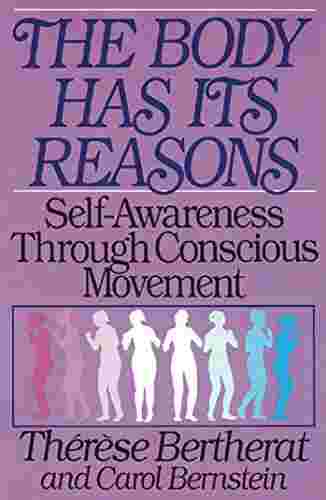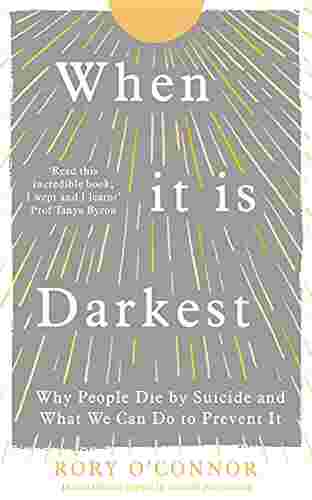Do you want to contribute by writing guest posts on this blog?
Please contact us and send us a resume of previous articles that you have written.
The Shocking Truth Behind Why So Many People Die By Suicide And How You Can Help Save Lives

Every year, millions of lives are lost to suicide. It's a grave issue that affects individuals and communities worldwide, and its impact is devastating. While suicide is a complex and deeply personal act, understanding the reasons behind it can help us build a society that supports those who are struggling and prevents needless loss of life. In this article, we will explore the factors that contribute to suicide and discuss actionable steps we can take to prevent it.
The Dark Depths of Desperation
Suicide is a culmination of various factors, often intertwined with mental health challenges and underlying emotional pain. It is rarely a simple decision but rather the result of a person feeling isolated, hopeless, overwhelmed, or trapped in their circumstances. Contrary to popular belief, it is not a reflection of weakness or selfishness, but rather a desperate attempt to escape unimaginable suffering.
Contributing factors to suicide can include depression, anxiety, substance abuse, trauma, prolonged stress, social isolation, and feelings of inadequacy. Additionally, mental illnesses such as bipolar disorder, schizophrenia, or borderline personality disorder can significantly increase suicide risk. It is imperative to recognize that suicide is a complex issue with multifaceted causes, and addressing it requires a comprehensive approach.
4.8 out of 5
| Language | : | English |
| File size | : | 3671 KB |
| Text-to-Speech | : | Enabled |
| Screen Reader | : | Supported |
| Enhanced typesetting | : | Enabled |
| X-Ray | : | Enabled |
| Word Wise | : | Enabled |
| Print length | : | 339 pages |
Breaking the Silence - Destigmatizing Mental Health
One of the first steps in preventing suicide is breaking the silence surrounding mental health. Society's attitude towards mental illnesses plays a crucial role in shaping the support available to those in need. By destigmatizing mental health, we can create an environment where individuals feel comfortable seeking help without fear of judgment or discrimination.
Education plays a vital role in reducing stigma. Schools, workplaces, and communities should prioritize mental health literacy programs to disseminate accurate information, challenge misconceptions, and promote empathy. Additionally, media outlets have a responsibility to portray mental health issues realistically and sensitively to avoid perpetuating stereotypes or spreading misinformation.
Recognizing Warning Signs - The Power of Intervention
Recognizing the warning signs of suicide is essential to prevent it. While every individual's experience is unique, certain red flags can be indicative of someone at risk. These signs include expressing feelings of hopelessness, withdrawing from social activities, talking about death or suicide, sudden mood swings, significant changes in appetite or sleep patterns, and giving away personal belongings.
If you notice any of these warning signs in someone you know, it is crucial to intervene. Approach the person with empathy and understanding, expressing your concern and willingness to support them. Encourage them to seek professional help from therapists or helplines that specialize in suicide prevention. Remember, your intervention can potentially save a life.
Building a Supportive Network - Connection is Key
Creating a supportive network is vital in suicide prevention. Loneliness and isolation can exacerbate feelings of despair, making it even more difficult for individuals to see a way out of their struggles. By fostering connections within our communities, we provide a safety net for those who may be teetering on the edge.
Ensure that your community has accessible mental health resources, support groups, and helplines readily available. Encourage open conversations about mental health, allowing individuals to share their struggles without fear of judgment. By validating their experiences and offering a listening ear, we can lighten the burden and remind them that they are not alone.
Suicide Prevention: A Shared Responsibility
Preventing suicide is not the responsibility of a few select individuals; it is a collective effort that requires the participation of society as a whole. Governments must invest in mental health services and make them accessible and affordable. Employers need to prioritize and support the mental well-being of their employees. Families must foster open communication and provide a nurturing environment.
As individuals, there are simple yet impactful ways we can contribute too. Start by checking in on your loved ones regularly. Ask them how they are genuinely feeling and be prepared to listen without judgment. Educate yourself on the available resources and share them widely. Offer support and encouragement to those around you who may be struggling.
Suicide is a heartbreaking reality that affects far too many lives. Through understanding and compassion, we can work towards preventing it. By destigmatizing mental health, recognizing warning signs, building supportive networks, and taking collective responsibility, we can make a difference and save lives.
Remember, it only takes a moment to reach out and make someone feel seen, heard, and valued. Together, we can combat the silent epidemic of suicide and create a world where everyone can find hope and healing.
4.8 out of 5
| Language | : | English |
| File size | : | 3671 KB |
| Text-to-Speech | : | Enabled |
| Screen Reader | : | Supported |
| Enhanced typesetting | : | Enabled |
| X-Ray | : | Enabled |
| Word Wise | : | Enabled |
| Print length | : | 339 pages |
Winner of the 2021 BPS Popular Science Book Award
'Read this incredible book. I wept and I learnt' - Prof Tanya Byron
'This book comes from the heart' - Roman Kemp
'Compassionate, personal and thought-provoking' - Prof Steve Peters
When you are faced with the unthinkable, this is the book you can turn to.
Suicide is baffling and devastating in equal measures, and it can affect any one of us: one person dies by suicide every 40 seconds. Yet despite the scale of the devastation, for family members and friends, suicide is still poorly understood.
Drawing on decades of work in the field of suicide prevention and research, and having been bereaved by suicide twice, Professor O'Connor is here to help. This book will untangle the complex reasons behind suicide and dispel any unhelpful myths. For those trying to help someone vulnerable, it will provide indispensable advice on communication, stressing the importance of listening to fears and anxieties without judgment. And for those who are struggling to get through the tragedy of suicide, it will help you find strength in the darkest of places.

 Corbin Powell
Corbin PowellSmash Period Pain: The Ultimate Guide to Period Pain...
Period pain, also known as dysmenorrhea, is a...

 Herman Melville
Herman MelvilleTransform Your Body And Maximize Your Performance With...
Are you tired of spending hours in the gym...

 Edison Mitchell
Edison MitchellThe Shocking Exodus: Why Millions of Catholic Priests and...
The Catholic Church has long been an...

 Gary Reed
Gary ReedUnveiling the Power of Protection Crystals: Recovering...
In the realm of ancient Celtic wisdom, the...

 Hugh Reed
Hugh ReedThe Body Has Its Reasons - Unlocking the Secrets of Our...
Have you ever wondered why your body...

 Jesus Mitchell
Jesus MitchellThe Shocking Truth Behind Why So Many People Die By...
Every year, millions of lives are lost to...

 Jeff Foster
Jeff FosterThe Dark Side of Religious Leadership: Unveiling the...
In every society, religious leaders hold a...

 Lawrence Bell
Lawrence BellHow To Talk With Your Subconscious Mind And Daydream Your...
Do you ever feel like your...

 Trevor Bell
Trevor BellUnraveling the Mystery: Death At The Demo Bernie...
Prepare to plunge into a thrilling world of...

 Ken Simmons
Ken SimmonsThe Complete Nyingma Tradition: From Sutra to Tantra to...
In the realm of Tibetan Buddhism, the...

 Fred Foster
Fred Foster7 Natural Remedies to Effectively Treat Palmoplantar...
Are you tired of dealing with the...

 Bradley Dixon
Bradley DixonThe Fascinating Reality of Mediumship: Exploring Life in...
Have you ever wondered what lies beyond our...
Light bulbAdvertise smarter! Our strategic ad space ensures maximum exposure. Reserve your spot today!

 Dillon HayesDK Eyewitness Top 10 Beijing Pocket Travel Guide - The Ultimate Companion for...
Dillon HayesDK Eyewitness Top 10 Beijing Pocket Travel Guide - The Ultimate Companion for... Louis HayesFollow ·19.9k
Louis HayesFollow ·19.9k Gordon CoxFollow ·10.5k
Gordon CoxFollow ·10.5k Christian CarterFollow ·19.8k
Christian CarterFollow ·19.8k Jules VerneFollow ·5k
Jules VerneFollow ·5k Felix HayesFollow ·2.6k
Felix HayesFollow ·2.6k Eric HayesFollow ·18.8k
Eric HayesFollow ·18.8k Anton FosterFollow ·2.6k
Anton FosterFollow ·2.6k Leo TolstoyFollow ·5.5k
Leo TolstoyFollow ·5.5k







































